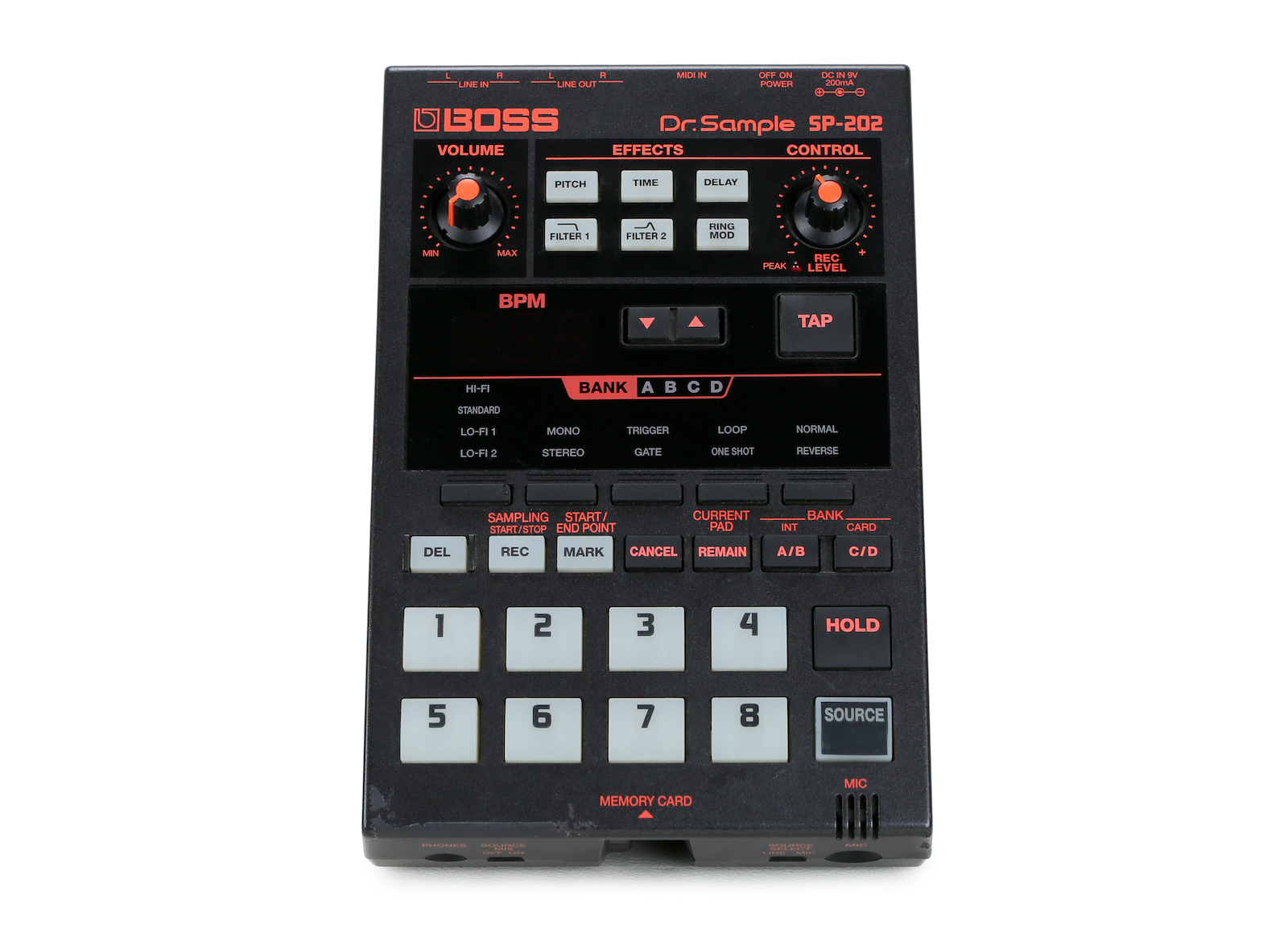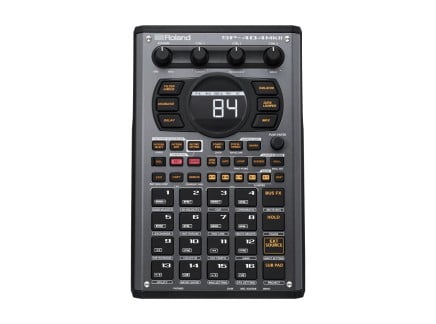Despite having collected vinyl for over two decades, I am a relatively recent convert to the world of "crate digging": that age-old practice of rummaging through record shop discount bins in the hopes of discovering snippets of sonic gold for sampling. Previously, I didn’t understand why anybody would buy anything from the rows of dusty old albums by long-forgotten acts, but now I am enlightened...and I see treasures everywhere.
For many, this process appears redundant and even potentially bizarre in an age where we can click into the entire history of recorded music online. Why bother spending actual money to take the chance on finding something worthwhile, when you can trawl YouTube for free, and only take what you actually want instead? The answer - for me at least - is that finding and sampling from vinyl is an entirely different experience, and one that is well worth the effort and additional expense.
Vinyl vs. YouTube
Whilst virtual crate digging can be fun, there is something uniquely satisfying about using physical media to sample from; a tactility and connection to the creative product from hand picking the source material that is missing from the digital equivalent. You can even hear the effort that’s been part of the journey—baked into the audio through the defining snaps, crackles and pops. Trying to add that character after-the-fact through a turntable emulation plugin is a common tactic, but one that I’ve never found to be quite the same—similar to how adding "film grain" in a photograph just doesn’t look right.
One of the other benefits of real life crate digging is that you are far more likely to stumble upon things that you would never come across on the Internet. When faced with seemingly endless resources, people default to the same old pathways, and it can be difficult to come across things that lie off the beaten path. The beauty of record stores (or thrift shops) is that each one will provide a very different selection, and your town may well have particular oddities that won’t be found anywhere else. On a recent trip to Korea for example, I came across a goldmine of interesting records that I would never have found at home...or online for that matter. Serendipity is often half the battle in creative pursuits.
Crate Digging
When hunting for records to sample from, the range can be overwhelming. While every digger has their own preferences, here are a number of different things I keep an eye out for:
- Obscurity: The weirder or less commercially successful an artist, the better. The artwork can give you a good indication of this, as well as the details on the inner sleeve. Unusual instruments are always a bonus.
- Release date: I will rarely pick up anything from before the 80s, though if it’s odd enough I will make an exception. The older and more poorly produced/recorded something is, the more chance I will find a way to re-use it in a novel way.
- Genre: Everything from soul, to funk, disco, folk, and classical music is fair game—particularly if it’s instrumental. I actively avoid rock, rap, and Western pop, as it is already either too distinctive already, or too dense to lift from.
- Price: I don’t want to pay more than a few bucks for an LP. Any more than that, and it is more likely to be a record that people know and like, not to mention the fact that it feels like too much of a gamble. Discovering an inspiring sound on a dirt cheap purchase is much more rewarding.
Once final decisions have been made, I’ll bring the records back to the studio and add them to my collection—preferring not to listen to any of them until it’s time to start work on a track. Hearing the music with fresh ears helps identify the sections that immediately stand out—something that can be lost with repeated revolutions of the decks. Ideally, I will sample as I go, to avoid losing individual bits (I am terrible at finding my place again with the needle).
Sampling from Vinyl
Over time I have experimented with a number of different approaches to sampling from records, making use of a variety of bits of (sometimes esoteric) gear. At this point however, I have largely settled on a kind of two-stage workflow: one that always begins with my Reloop RP-1000M turntable. It doesn’t really matter what kind you use, but I like the Reloop as it gives me a wide range of control over playback speed. Something that sounds dull and uninspiring at 33 ⅓ RPM can take on a totally different character at a quarter of that, and I almost always play about with pitch at this early stage of the game. Adjusting this on the platter has a particular quality to it that you don’t get with more extreme shifts once the sample is recorded.

[Above: the venerable Boss Dr. Sample SP-202 Sampler]
Next, from the decks I play the vinyl back through some kind of capture device. This varies, depending on what I’m after, but my general preference is for something that will add a bit of character to the sound. Transparency is definitely not the goal here! Two of my favourite go-to choices are the Boss SP-202 (often dismissed as "obsolete"), and the Yamaha SU-700 (which has an odd workflow, but a great selection of FX). Both of these can sample at different bit rates, and have particularly pleasing sonic signatures.
The art of finding a suitable sample is harder to define, in that I don’t really know what I’m looking for until I hear it. Sometimes that might be a chord, or a vocal line, or more often than not, a full passage—but it is almost always melodic in nature. Once I’ve identified my pickings, they get recorded, and I’ll adjust them to taste with whatever EQ, filters, or other FX that my chosen device has to offer. Usually, this means removing the lower frequencies, and dialling out any drums that may be present, to allow more room for other elements to be added in later on.
Chopping and Composing
For the second stage of the process, I record my chosen audio into a more capable machine. Specifically, that is often either an Akai Force, or the slightly more vintage MPC 2500. These are perfect for chopping up the samples into sections, which can then be re-pitched, and played across the pads in a natural, fluid way. As much as I love the 2500, I’ve recently been gravitating more towards the Force, thanks to its greater number of pads, and impressive storage options (SD card, onboard SSD, etc).
[Above: the Akai MPC-2500 sampler]
At this point, tap tempo helps find a pace that works with the chops I’ve prepared, and I’ll begin to build up a melody along to a click. From there, I’ll explore my library of drum samples to build up a kit, and try to find a groove that fits—playing it out manually. Once that’s locked in, it’s just a matter of experimenting with different sequences and melodies to form the base of a "song." I will usually layer up different elements including additional one shot FX to add a bit of flavor, and sometimes record additional parts from my own synth collection (the Yamaha Reface CP and YC are some of my favorites). Rather than striving for the whole thing to be "lofi," I am a big fan of having a mixture of gritty melodic vinyl samples, and higher quality drum sounds.
From there, it’s just a matter of production and post-processing, which can be done completely in the box with either the Force or the MPC 2500, though I usually prefer to multi-track record the arrangement into Logic for the final touches (EQ, mixing, mastering, etc). Behold...my creation.
Building Your Own Vinyl Sampling Setup
There is a significant amount of mythos and strongly held opinions when it comes to beat making, with plenty of folks out there who will insist that sampling from vinyl has some kind of special sauce that you simply can’t get any other way—or that nothing but an MPC3000 will do.
The truth is that it doesn’t really matter what gear you have or choose to use when it comes to the process of sampling and production, or where you get your source material (leaving aside any legal or ethical debates). What’s important is that you enjoy the process, and find something that inspires and works for you.
If you are interested in exploring the world of vinyl sampling, there’s a plethora of options out there for you to choose from. As mentioned earlier, it doesn’t really matter what decks you use—unless you’re aiming for flawless audio quality, and if that’s the case, then you’re probably wandering down the wrong path here anyway. Bear in mind that depending on the sampler you are using, you will probably need a phono preamp to bring the signal up to an appropriate level. Something like the ART DJ PRE II Phono, or Pro-Ject Phono Box MM. Personally, I use a Behringer PP400.
When it comes to the sampler itself, you can of course go for the more traditional Akai route, with an MPC One or Force—which are both options I would recommend. However, plenty of beat-makers swear by the Roland SP-404, and you could also go down a completely different route with a tracker-based workflow like the Dirtywave M8 or Polyend Tracker. Alternatively, while not a "sampler" (meaning that you would need something like a Zoom H4n to record from the vinyl as an intermediary step in preparing the samples), I’ve really enjoyed using the Polyend Play with its grid layout and interesting performance options. Ultimately, it’s about finding the approach to composition that feels best. Just because you are sampling from vinyl, it doesn’t mean that you need to feel stuck within the "lofi beats to study to" genre. It’s likely that you have a lot of what you need to experiment already. Get creative!
Summary
In a digital era, there’s a lot to be said for finding ways to feel tangibly closer to the music production process—particularly for those of us who inhabit the "bedroom producer" space. Tracking down vinyl and going through that whole journey becomes part of the creative expression itself, and adds layers to what can otherwise sometimes feel like a sterile pursuit.
Interestingly enough, one of the unexpected by-products for me of buying vinyl to sample from has been that I have been listening to, and discovering music that I would never otherwise would have—and actually enjoying it. It has expanded my aural horizons, and for that reason alone I’d encourage folks to give it a shot.














